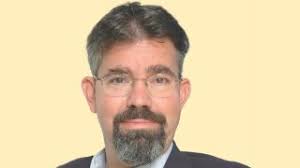FCC: Broadcasters Can't Use Vacant Chs. for NextGen TV
FCC resolves various petitions, issues, in ATSC 3.0 transition

WASHINGTON—The FCC has resolved some major outstanding issues in its framework for a transition to the ATSC 3.0 broadcast transmission standard, which will allow for higher-definition pictures, targeted ads, interactivity and "broadcast internet."
The FCC declined to allow vacant in-band channels to be used for ATSC 3.0 deployment, which broadcasters sought but computer companies opposed because they want to use those channels for wireless broadband.
That came in a Report and Order resolving various petitions for reconsideration of its NextGen TV order and "other matters" related to local simulcasting rules, use of vacant broadcast channels and the "significantly viewed" status of "NextGen TV stations" (the FCC has adopted broadcasters' rebranding of ATSC 3.0).
The item provides guidance on how the FCC will evaluate waiver requests for processing of its simulcasting rules—the ATSC 3.0 signals are not compatible with current sets, so the FCC is mandating a transition period in which ATSC 1.0 signals must also be broadcast, either by the station transitioning or another station in the market with which it has struck a deal.
The FCC retained the sunset of that mandatory simulcasting at 2023, which means cord-cutters will have to get new sets or adapters by then.
The commission is allowing for an expedited simulcast waiver for stations who don't have an available broadcast partner and a presumptive waiver for noncoms with no viable partner.
The FCC is requiring TV stations to broadcast in both ATSC 3.0 and the current ATSC 1.0 standard during a transition period since viewers can't receive the new transmissions without a new set or adapter and, unlike the digital transition, there is no government money for subsidizing adapters.
The professional video industry's #1 source for news, trends and product and tech information. Sign up below.
The FCC is also putting a "soft" 60-day shot clock for action on waiver applications, which FCC Commissioner Michael O'Rielly said landed in about the right spot in terms of making sure the FCC acts expeditiously.
The FCC also concluded that the "significantly viewed status" of a station conveys if the ATSC 1.0 signal is transmitted by another station.
In a victory for broadcasters, the FCC rejected a petition by NCTA-The Internet & Television Association that the ATSC 3.0 standard must be licensed on a reasonable and nondiscriminatory (RAND) basis. But the FCC said if a patent issue arose, "it will consider it and take appropriate action."
PLUS: FCC Says TV Ownership Rules Don't Apply to Broadcast Internet via 3.0
O'Rielly supported declining to allow for vacant channel use for simulcasting during the transition period, citing the need to keep those "white spaces" open for wireless broadband (Mirosoft's Air Band initiative is a notable example).
Commissioner Jessica Rosenworcel, another fan of white spaces for broadband, also said she was pleased the agency had declined to authorize vacant channels for ATSC 3.0 so those channels could instead be used to "help bring broadband to households that are among the hardest to reach and most difficult to connect."
She was not a big fan of keeping the 2023 cut-off for simulcasts. "[T]he agency is setting a day by which households nationwide could have to replace their televisions in order to continue to watch broadcast programming. That means the FCC is planning to make consumers shoulder the cost of this transition—and that’s not right."
She also wanted the patents to be on a RAND basis. "When the agency adopted the ATSC 1.0 standard, reasonable and nondiscriminatory terms were a part of the package. By failing to follow history here, FCC is conferring special status on those who hold key patents without requiring fair terms in exchange."
Commissioner Geoffrey Starks was generally supportive, but also had a number of issues. He said the FCC missed the mark by suggesting, rather than mandating, that broadcasters would be fulfilling their duty to keep viewers with older sets connected by making a free ATSC 3.0 converter available. He said the FCC should mandate, as a condition of a simulcast waiver, that a broadcaster do so.
He also said the order did not adequately address the concerns of smaller MVPDs who would have to upgrade to ATSC 3.0 for stations that got waivers from the ATSC 1.0 simulcast mandate.
Starks would have preferred no 2023 sunset, but said he appreciated the FCC's commitment to revisit marketing conditions before allowing those plugs to be pulled. He also joined with Rosenworcel and O'Rielly in applauding leaving vacant channels open so that "other existing and valuable users of TV band spectrum, including wireless microphones and white spaces devices," would not experience interference.
“By recognizing the enormous challenges some public television stations would face in finding simulcasting partners, particularly those with transmitters located in remote, often isolated areas, the FCC is ensuring that these stations have the flexibility to pursue the public service benefits of ATSC 3.0 in a way that best serves their local communities and ensures that their viewers have access to the one-of-a-kind services in education, public safety and civic leadership provided by local public television stations as they transition to Next Gen TV," said America's Public Television Stations, which had sought the presumptive waiver.
NAB issued a statement of the FCC Report and Order:
“NAB appreciates the Commission’s action to reject the baseless petitions for reconsideration of the order authorizing voluntary use of Next Gen TV. We also appreciate the FCC providing additional clarity regarding waivers of the simulcasting requirement. With the recent launch of Next Gen TV transmission in Las Vegas and Pittsburgh, broadcasters are more excited than ever to bring better and new services to viewers in the near term."
Contributing editor John Eggerton has been an editor and/or writer on media regulation, legislation and policy for over four decades, including covering the FCC, FTC, Congress, the major media trade associations, and the federal courts. In addition to Multichannel News and Broadcasting + Cable, his work has appeared in Radio World, TV Tech, TV Fax, This Week in Consumer Electronics, Variety and the Encyclopedia Britannica.

